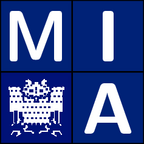
Welcome to the homepage of the lecture
Image Compression
Summer Term 2022
Home
About Us
People
Teaching
Research
Publications
Awards
Links
Contact
Internal

Image Compression
Two Computer Science Teaching Awards (Summer Terms 2017 and 2019)
Lecturer:
Dr. Pascal Peter
Summer Term 2022
Lecture (4h) with exercises (2h)
9 credit points
Mode: virtual inverted class room with face-to-face or online tutorials
Time slots:
Tuesday 8:30-10 s.t. (online video lectures)
Friday 14-16 c.t. (active online discussion)
Video lectures are availble on-demand and can watched outside of the dedicated time slot.
Introductory Meeting: 19.04.2022, 9:00 s.t.
First Lecture: 22.04.2022, 14 c.t.
Announcements –
Description –
Entrance requirements –
Tutorials –
Exams
Lecture notes/Assignments –
References
06/04/2022 The website has been updated with the lecture mode and time slots. For more detailed information, please register and
consider the information in MS Teams.
24/02/2022 Website is online. Regular teaching will begin in April, but you can already register for the course,
which enables you to join the course on MS Teams. There, you can already ask questions and access all lecture content.
Details about the teaching mode (in person/digital/hybrid) will be announced closer to the start of the semester.
Keep in mind that in most courses of studies, you also have to register via the HISPOS system of the Saarland University
Motivation: High resolution image data is becoming increasingly popular in research and commercial applications (e.g. entertainment, medical imaging). In addition, there is also a high demand for content distribution via the internet. Due to the resulting increase in storage and bandwith requirements, image compression is a highly relevant and very active area of research.
Teaching Goals: The course is designed as a supplement for image processing lectures, to be attended before, after or parallel to them. After the lecture, participants should understand the theoretical foundations of image compression and be familiar with a wide range of classical and contemporary compression methods.
Contents: The lecture spans the whole evolution of image compression from the dawn of information theory to recent machine-learning approaches. It is seperated into two parts:
The first half of the lecture deals with lossless image compression. We discuss the information theoretic background of so-called entropy coders (e.g. Huffman-coding, arithmetic coding, ...), talk about dictionary methods (e.g. LZW), and cover state-of-the-art approaches like PPM and PAQ. These tools are not limited to compressing image data, but also form core parts of general data compression software such as BZIP2. Knowledge about entropy coding and prediction is key for understanding the classic and contemporary lossless codecs like PNG, gif or JBIG.
The second part of the lecture is dedicated to lossy image compression techniques. We deal with classic transformation based compression (JPEG, JPEG2000), but also with emerging approaches like inpainting-based, fractal, or neural network compression. Furthermore, we consider related topics like human perception, and error measures.
Basic mathematics courses (such as Mathematik für Informatiker I-III) are recommended. Understanding English is necessary. Image processing lectures such as "Image Processing and Computer Vision" are helpful for some specific topics, but not necessary. For the programming assignments, some elementary knowledge of C is required.
The tutorials include homework assignments as well as class room assignments. Homework assignments are handed in and graded, while class room assignements are problems that are often designed to entice discussion. The latter type of assignments will not be handed in, but are intended to be solved in group work.
Tutorials can be attended either as face-to-face meetings or online. In both cases, active participation yields points for exam admission.
If you have questions concerning the tutorials, please do not hesitate to contact Pascal Peter.
There will be two open book written exams:
The first written exam will take place on Thursday, July 28, 2022
from 2:00 to 4:00 pm in Building E2.2, Günter
Hotz Lecture Theatre.
The second written exam will take place on Monday, October 10, 2022
from 2:00 to 4:00 pm in Building E2.2, Günter
Hotz Lecture Theatre.
You can find the detailed rules for our exams in
the self test assignemnt
that will be published towards the end of the semester.
You can participate in both exams, and the better grades counts.
Please remember that you have to register online for the exam
in the HISPOS system of the Saarland University.
If you cannot attend the exam, contact Pascal Peter as early as possible.
In case you have proof that you cannot take part for medical reasons or you
have another exam on the same day, we can offer you an oral exam as a replacement.
Note that we need written proof (e.g. a certificate from a physician/Krankenschein)
for the exact date of the exam.
Lecture content available for
download in MS Teams. This also holds for assignment submission and grading.
You will be granted access to Teams after registration.
- B. Jähne, H. Haußecker, P. Geißler, editors, Handbook of Computer Vision and its Applications. Volume 1: Sensors and Imaging. Academic Press, San Diego 1999.
- S. Webb, The Physics of Medical Imaging. Institute of Physics Publishing, Bristol 1988.
- C. L. Epstein, Introduction to the Mathematics of Medical Imaging. Pearson, Upper Saddle River 2003.
- R. Blahut, Theory of Remote Image Formation. Cambridge University Press, 2005.
- A. C. Kak, M. Slaney, Principles of Computerized Tomographic Imaging. SIAM, Philadelphia 2001.
- Articles from journals and conferences.
Further references will be given during the lecture.
MIA Group
©2001-2023
The author is not
responsible for
the content of
external pages.
Imprint -
Data protection